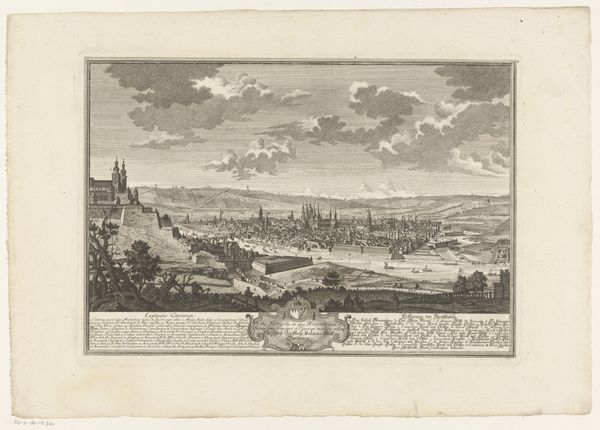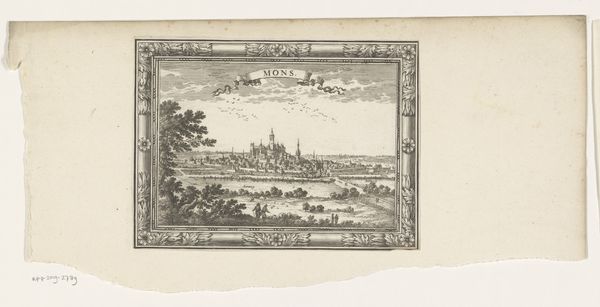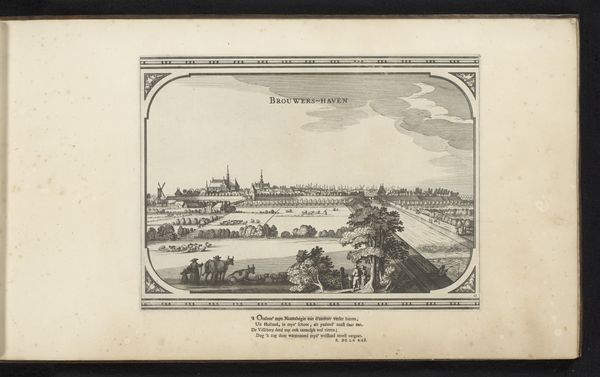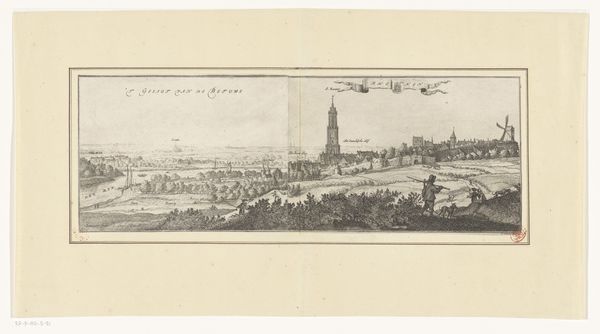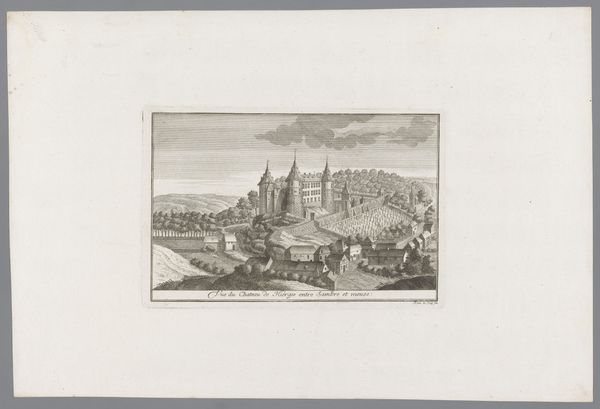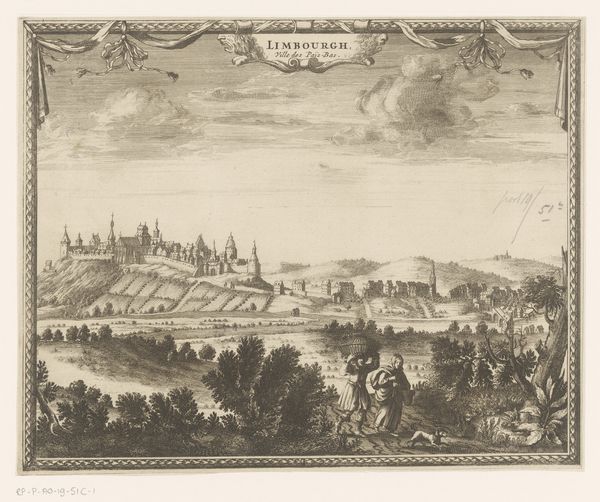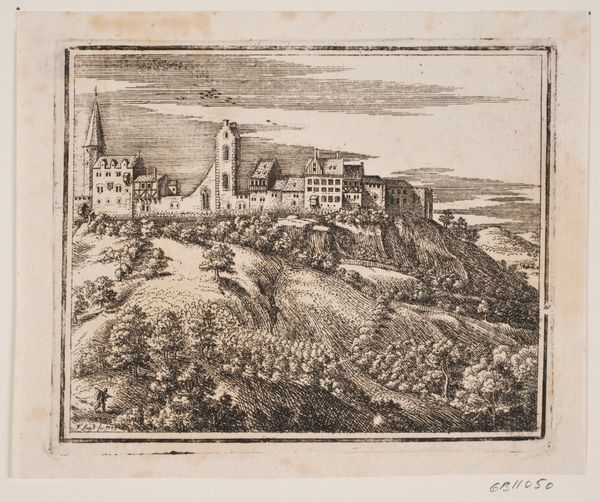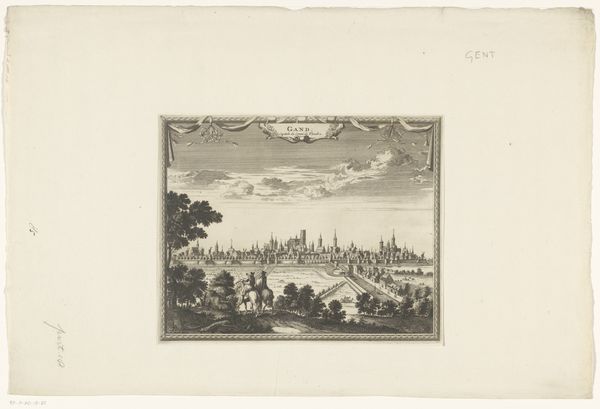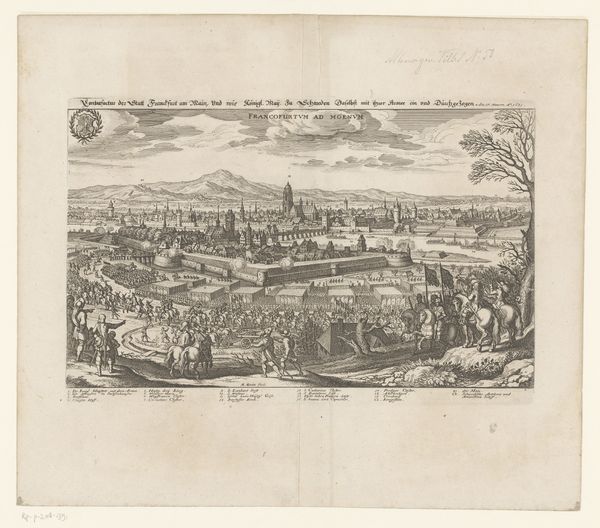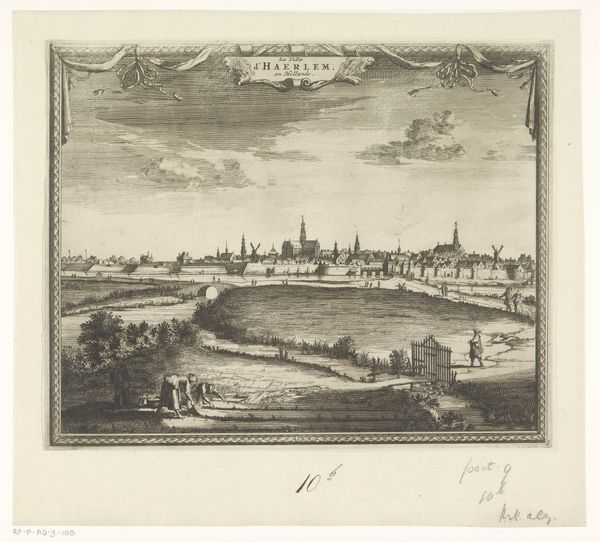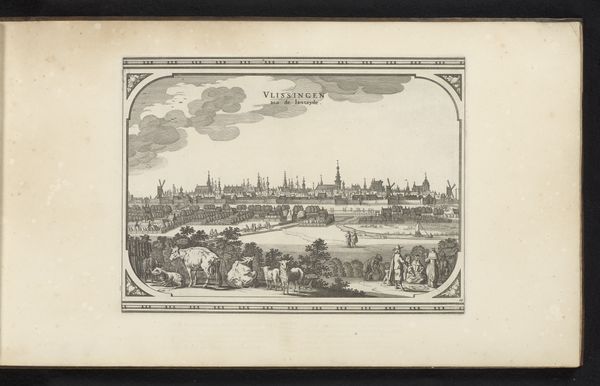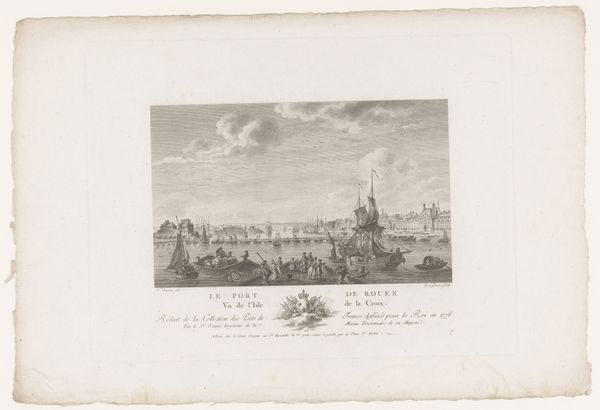
drawing, print, watercolor
#
drawing
#
water colours
#
dutch-golden-age
# print
#
landscape
#
watercolor
#
cityscape
#
watercolour illustration
#
watercolor
Dimensions: height 199 mm, width 490 mm, height 225 mm, width 514 mm
Copyright: Rijks Museum: Open Domain
Editor: Here we have “Gezicht op Rhenen,” a watercolor drawing by Steven van Lamsweerde, created sometime between 1631 and 1665. It's quite charming, but the presentation feels… deliberate, almost staged. What story do you think this artwork is trying to tell? Curator: Well, consider the period: the Dutch Golden Age. Cityscapes like these weren't just pretty pictures. They served a purpose. They were visual records of a city's importance, prosperity, and civic pride. Notice the placement of the Rhenen’s landmarks and windmills, for instance, seemingly documenting infrastructure investment. How do the two shields on either side fit into this in your opinion? Editor: You’re right, those look important. Are they…heraldic symbols for Rhenen? So it's not just about the place, but about claiming or displaying authority and status. Curator: Precisely. City views like these would be commissioned by the city itself, or wealthy merchants. They would be disseminated through prints and would shape how people viewed Rhenen – both within and outside of its borders. Do you get a sense of that at all? The relationship between representation and the socio-economic realities it reflects and shapes? Editor: Absolutely. It is like propaganda almost! It's fascinating how something that looks like a simple landscape can reveal so much about the priorities and power structures of the time. Curator: Indeed! Art is rarely just about aesthetics. It's often deeply intertwined with the political and social currents of its time, influencing perception and solidifying specific narratives about place, belonging, and power. Editor: This has definitely made me rethink how I approach landscapes. There's so much more than just pretty scenery. Thank you for sharing your insights! Curator: My pleasure. It’s these layers of history and context that make art so endlessly rewarding.
Comments
No comments
Be the first to comment and join the conversation on the ultimate creative platform.
